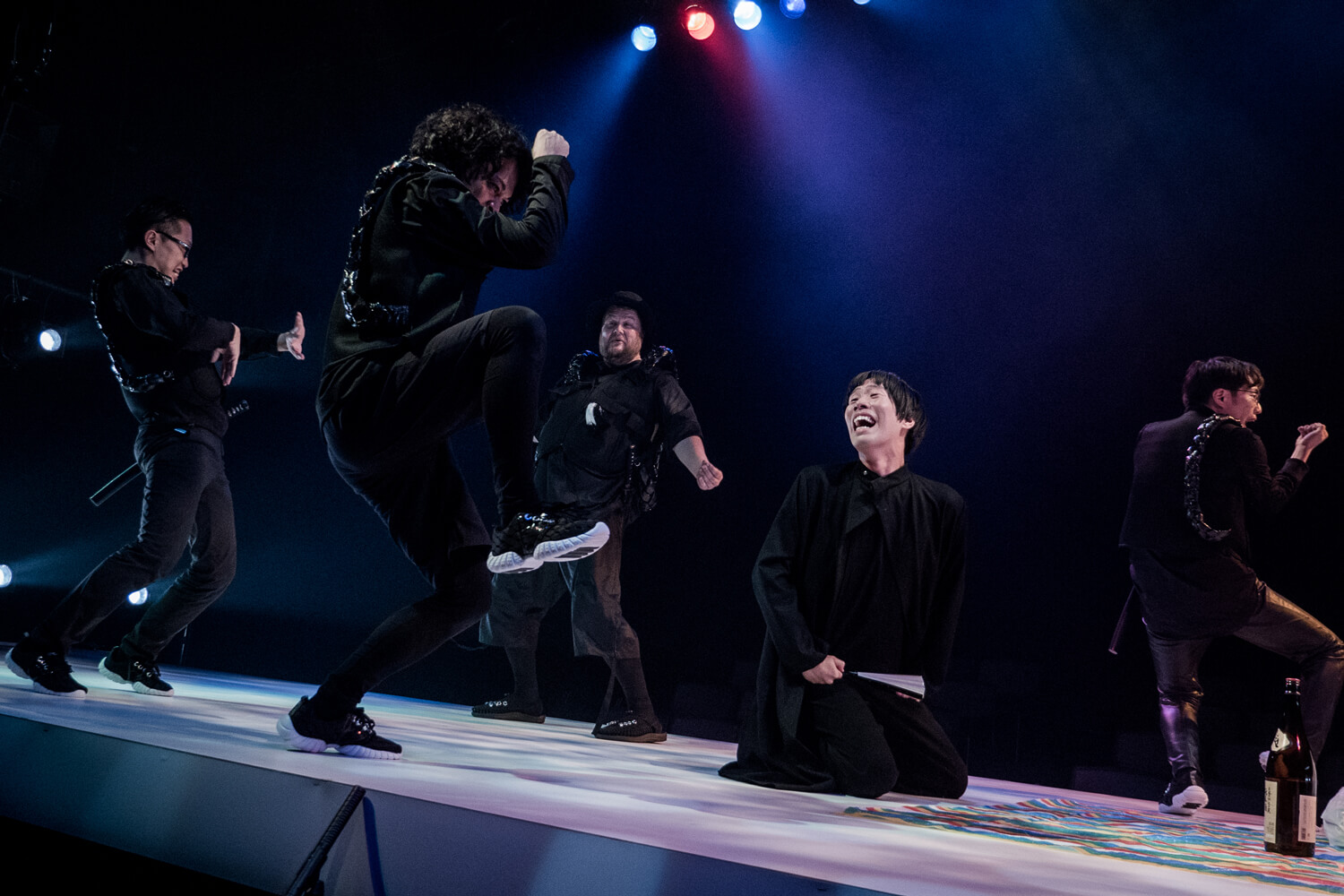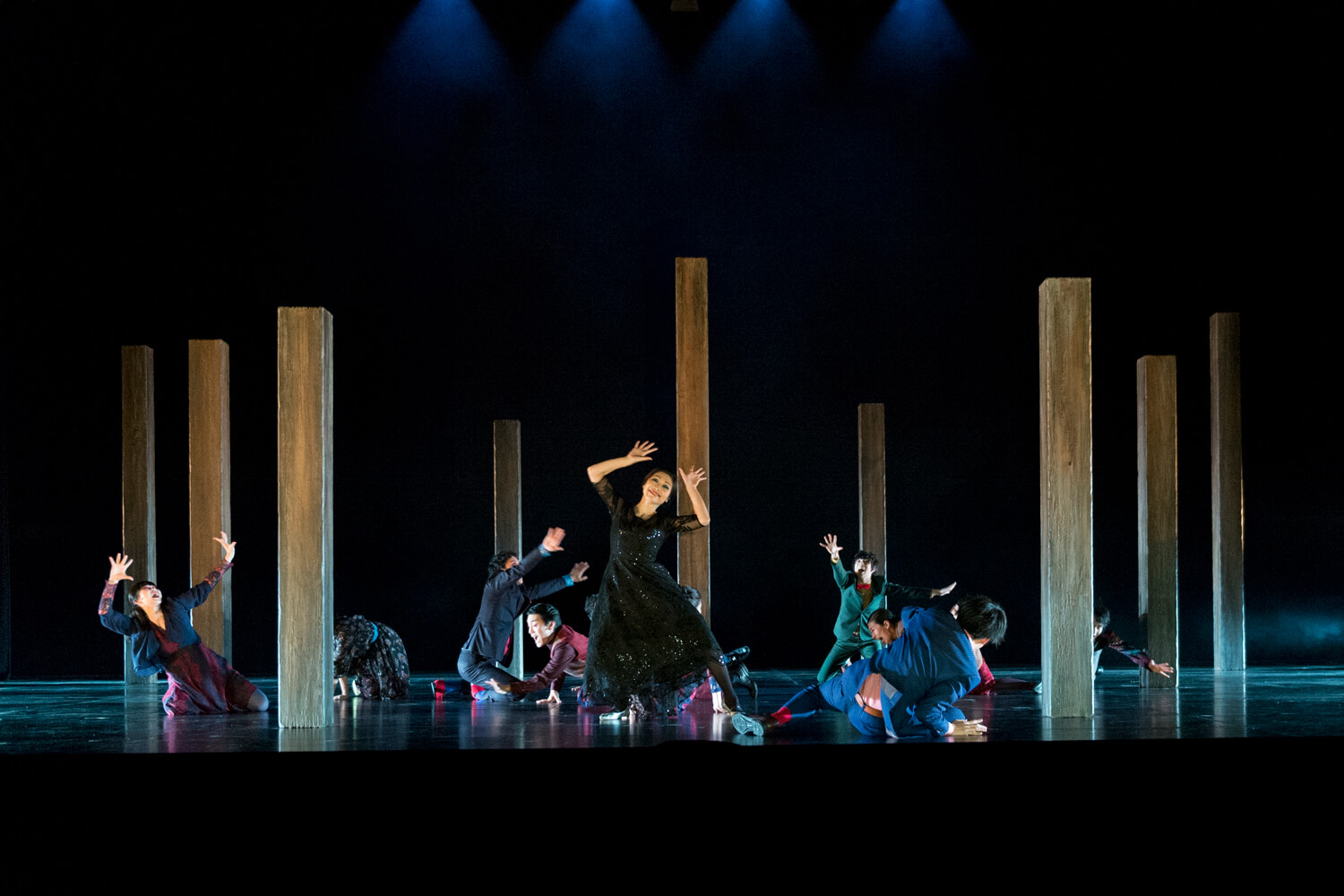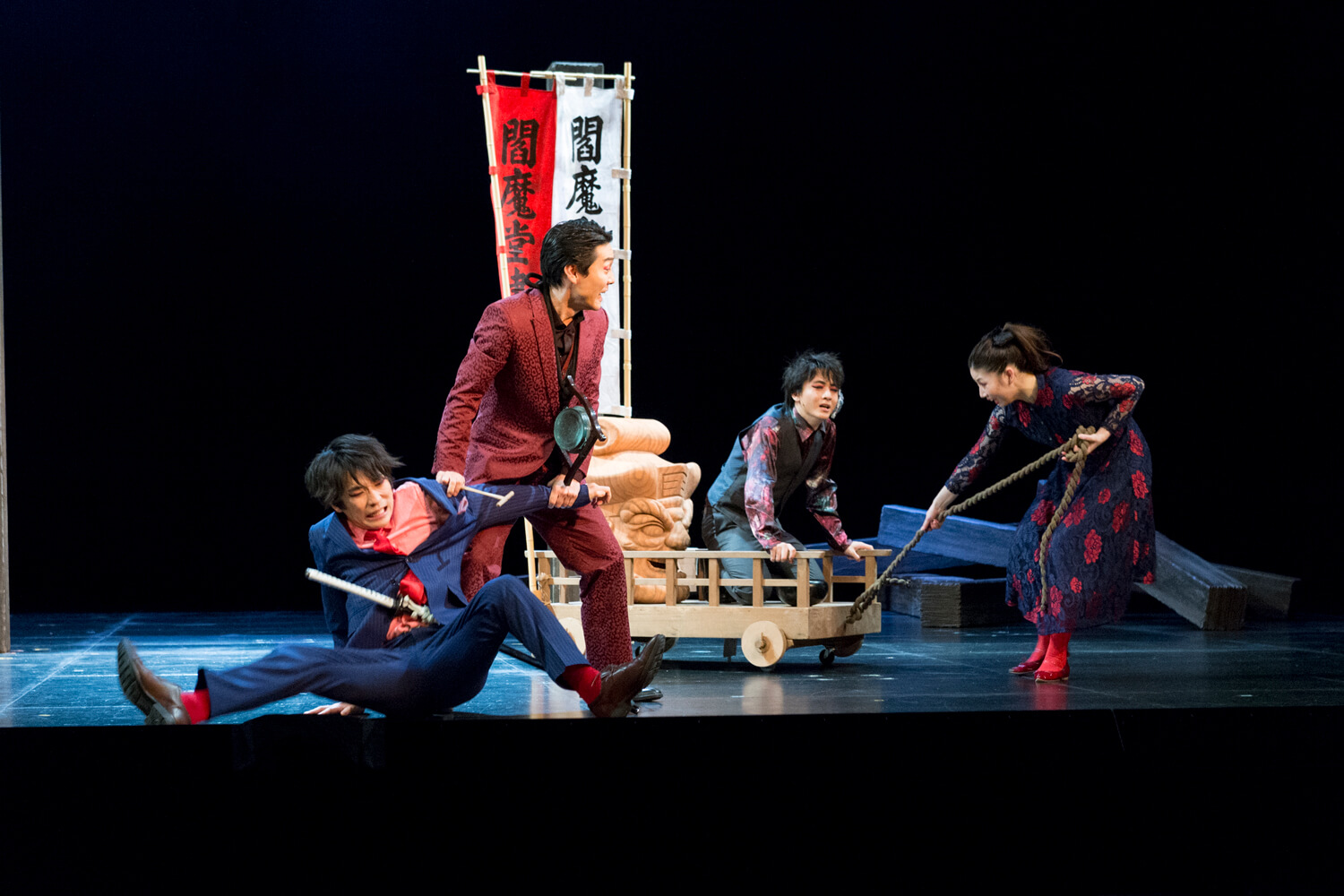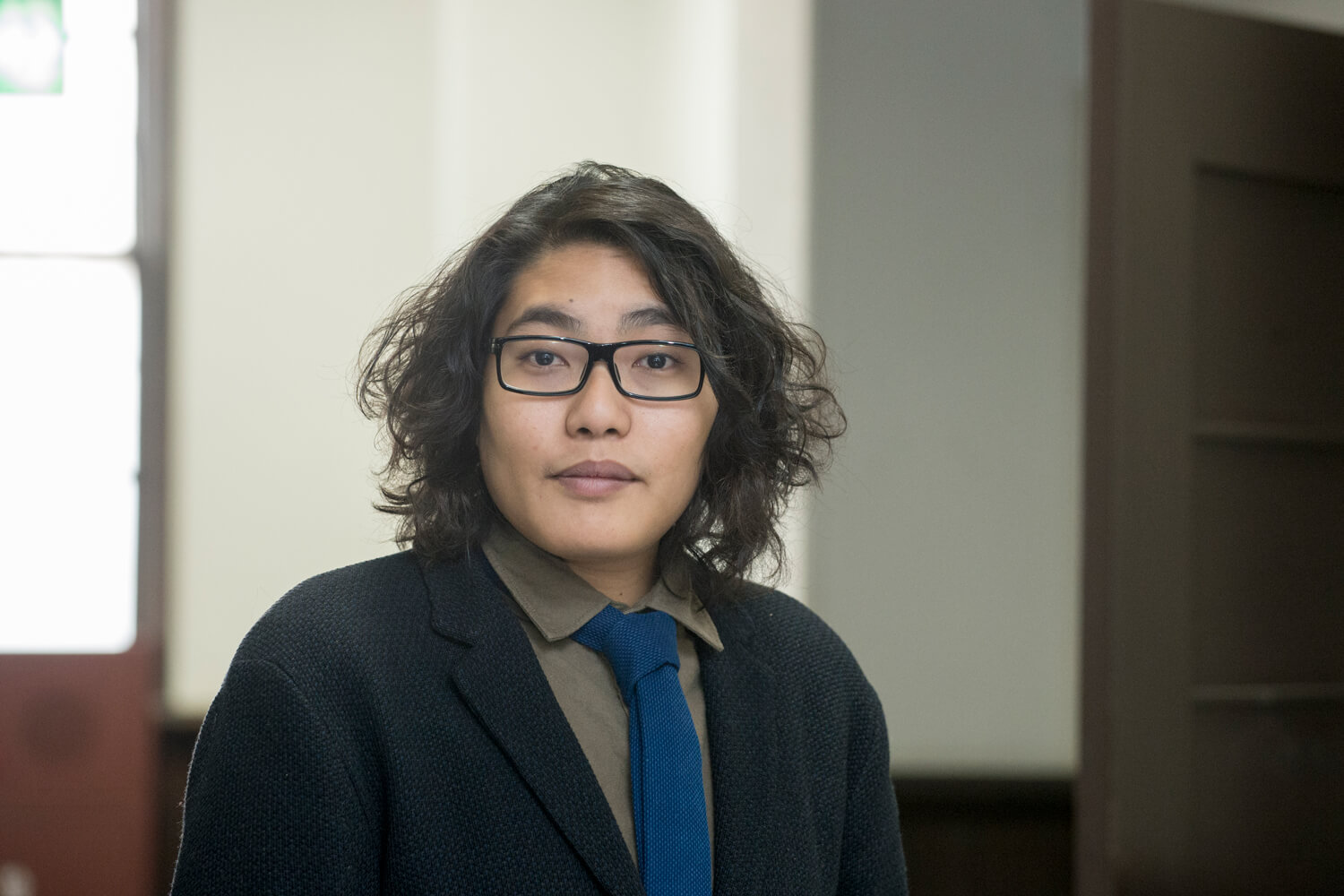Kinoshita Kabuki, the Theatre Company Bringing Kabuki into the Modern Age
Founded by Yuichi Kinoshita in 2006, this theatre group intends to make japanese traditional theatre codes accessible to all.

‘KANJINCHO’, Supervised by Yuichi Kinoshita, Directed by Kunio Sugihara, ©KYOTO EXPERIMENT, Photo by Yoshikazu Shimizu
By revisiting ancient plays and adding a contemporary touch, theatre company Kinoshita Kabuki, founded by Yuichi Kinoshita in 2006, aims to make the plots of kabuki more understandable for a modern audience. Indeed, this traditional form of Japanese theatre, in which dialogues alternate with song and dance interludes, is a highly codified art.
From the gestures to the costumes, not forgetting the intonation, make-up, and facial expressions that convey the characters’ state of mind, kabuki theatre is not easily accessible to those who do not hold the keys to understanding plays dating back to the 17th century.
Trainers, neon lights, and junk food
To bring kabuki up to date, Yuichi Kinoshita, a graduate of the performing arts department of Kyoto University of Art and Design, set to work with his company to produce a modern adaptation of classic popular plays such as Kanjincho, produced at the Centre Pompidou in Paris in 2018. This daring reinterpretation takes the form of a whimsical dramatisation in which the actors, wearing black trainers, perform on a stage lit by bright neon lights and covered with Japanese junk food. Keen to modernise and rejuvenate each new play, Kinoshita Kabuki dares to use modern costumes and contemporary language, and even incorporates hip-hop and electro music.
Yuichi Kinoshita does not consider himself the company’s official dramatist; instead, he appeals to young directors for each production, each of whom bring their own vision of kabuki. It’s a risky move, but one that has found a willing audience, who is pleased to watch this dialogue between traditional arts and modern theatre.
Kanjicho is a play produced by Kinoshita Kabuki in Paris at the Centre Pompidou in 2018. More information on Kinoshita Kabuki on the company’s website.

‘KANJINCHO’, Supervised by Yuichi Kinoshita, Directed by Kunio Sugihara, ©KYOTO EXPERIMENT, Photo by Yoshikazu Shimizu

‘Sesshu Gappo ga Tsuji (Itoi Version)’, Supervised by Yuichi Kinoshita, Direction & Music by Konosuke Itoi, ©Rohm Theatre Kyoto, Photo by Naoko Azuma

‘Sesshu Gappo ga Tsuji (Itoi Version)’, Supervised by Yuichi Kinoshita, Direction & Music by Konosuke Itoi, ©Rohm Theatre Kyoto, Photo by Naoko Azuma

Yuichi Kinoshita, Photo by Naoko Azuma
TRENDING
-
The Tattoos that Marked the Criminals of the Edo Period
Traditional tattoos were strong signifiers; murderers had head tattoos, while theft might result in an arm tattoo.

-
Paris, Tokyo: Robert Compagnon
With his co-chef and talented wife, Jessica Yang, Robert Compagnon opened one of the top new restaurants in Paris: Le Rigmarole.
 3:31
3:31 -
Chiharu Shiota, Red Threads of the Soul
Last year, more than 660,000 people visited the retrospective 'Chiharu Shiota: The Soul Trembles' exhibit at the Mori Art Museum.

-
‘Before Doubting Others, Doubt Yourself. Who Can Truly Say a Dish Isn’t What It Used to Be?’
In ‘A Non-Conformist’s Guide to Surviving Society’, author Satoshi Ogawa shares his strategies for navigating everyday life.

-
The Story of Sada Yacco, the Geisha who Bewitched Europe
Described by Dazed magazine as the first beauty influencer, she has been restored to her former glory since 2019.





